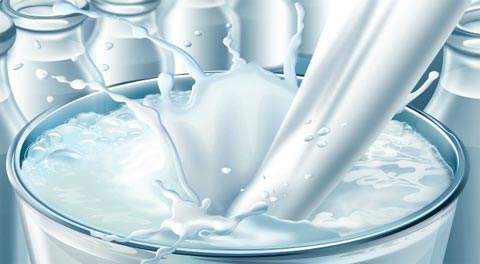No. of views : (59895)
How to trace adulteration in milk?
Posted on: 24/Jan/2018 5:42:12 PM

It is easy to identify addition of water to the milk. Spill the milk in drops on a sloping surface - if it runs in a path, you can confirm water has been added. If it does not run and a few drops of the milk stay in the slope, it confirms it as a pure milk.
To check whether flour has been added to the milk, take a ladle of the milk – mix with a tablespoon of salt. If blue circles appear, the milk has been added with flour. If there are no blue circles, the milk is pure.
Sometimes, fevicol or some chemicals used in soap-making are added to the milk – this can easily be detected by tasting the milk. If you pour a few drops of the milk on the palms and rub, foams like soap will come out. If you heat this milk, it will turn yellow. These are the methods to trace synthetic milk.
It is rather difficult to detect if urea is mixed in the milk. Urea is used to keep the original flavour/taste of the milk though it is a conditioned milk to be kept for longer periods.
However, this is harmful to the health. Mix a quantity of this milk with Soybeans powder and shake and dip a litmus paper in this. The litmus paper will turn red, This confirms the presence of urea.
Another chemical added to the milk is formalin. To trace this, take some quantity of milk and add sulphuric acid. If blue circles appear, it confirms the presence of formalin.
By following the above procedures, it is rather easy to trace the adulteration in the milk. As everyone knows, unadulterated milk is the best for good health.







